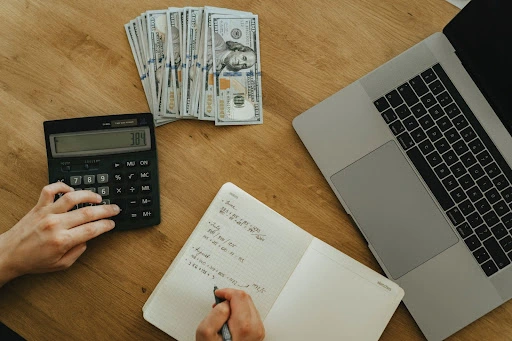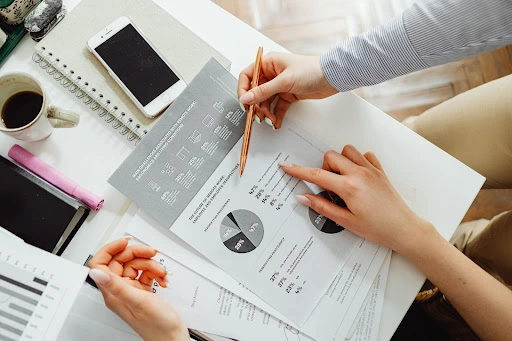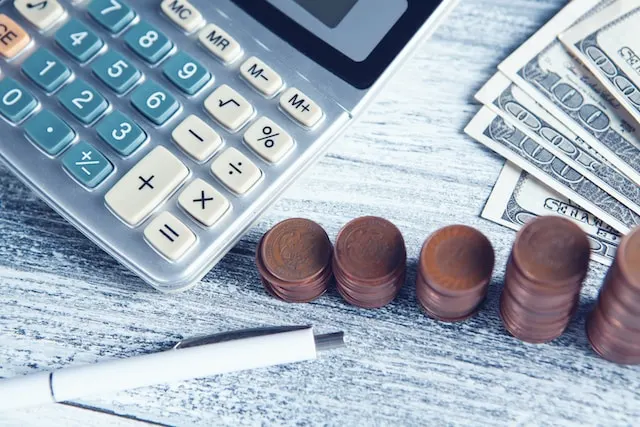Owning a business comes with many expenses, but thanks to accounting practices and IRS rules, you can spread the cost of some of your purchases out over time. While you may still have to cough up the cash up front, you can continue to deduct some of the expense of purchasing your assets over several years due to depreciation.

What is depreciation?
Depreciation is the process of decreasing the value of an asset over time. You can allocate the price you paid for some of your assets over the period of their useful life, spreading out the cost. You can depreciate items for accounting purposes and use depreciation on your corporate tax return to reduce your taxes.
Even though money doesn’t leave your bank account each year, depreciation is considered a fixed cost. It’s essential to understand how to calculate it and the impact of depreciation on your accounting records and business tax return.
What assets can be depreciated?
IRS Publication 946 has specific rules on what types of assets can be depreciated. You can only depreciate items that meet these requirements:
- It’s a property that you own
- You use it in your business as an income-producing activity
- It has a determinable useful life
- It’s expected to last more than one year
So what kinds of assets can your company depreciate? All kinds of things! You can depreciate your office building, machinery, equipment, and even business vehicles. You can also depreciate items like computers and office furniture.
These are all types of tangible property, but you can also depreciate intangible property: including intellectual property, patents, software, and goodwill.
However, there are some big-ticket items you can’t depreciate. Land, for instance, isn’t typically expected to lose value, so you can’t depreciate it. You also can’t depreciate investments or property you use for less than one year. While you may be able to depreciate some of your personal property (eg. a personal vehicle you also drive to visit clients), you can only depreciate the part of that property attributable to your business use.
What factors affect depreciation?
Three factors impact depreciation:
- The cost basis of the asset – The cost doesn’t just include how much you paid for the item itself. It can also include sales tax, shipping, installation, or other fees that may have been involved in acquiring the asset. IRS Publication 551 gives more details about determining the asset’s cost basis.
- The salvage value of the asset – Once the asset has reached the end of its useful life, will it retain value? Will you sell it to a scrap yard or perhaps sell it to another company or individual? Some assets may have no value at the end of their useful life, but many assets retain at least some value.
- Estimated useful life – How long will you use the asset in your business? Publication 946 provides tables for the useful life of many different types of assets.

Types of depreciation
As if depreciation weren’t confusing enough, there are several ways to depreciate an asset. Your accountant can help you pick the best method for your business and the asset you’re depreciating.
Here are the three main types of depreciation. We’ll give an example of each kind of depreciation using the same scenario.
Here is the scenario we’ll be using: Your company purchases a machine for your business for $10,000. You expect to use this machine for five years, and the value of the device at the end of five years will be $1,000.
1. Straight-Line
This type of depreciation is one of the easiest to understand and calculate. The depreciation amount remains the same each year until the depreciation reaches zero.
To find your depreciation amount, subtract the value of the machine at the end of its useful life from the cost of purchasing the machine.
$10,000 – $1,000 = $9,000
Then, divide $9,000 over the useful life of five years.
$9,000 / 5 = $1,800
You’ll depreciate this machine by $1,800 each year for five years. After that, the asset is fully depreciated and is now worth only its salvage value.
2. Double Declining Balance
Though straight-line depreciation is simple to understand, it’s not always the best depreciation choice. Many assets, such as computers or other technology that may quickly become obsolete, lose value more rapidly toward the beginning of their useful life. As a result, it’s more accurate to use an accelerated depreciation method, where you depreciate most of the cost at the beginning of the asset’s life.
The declining method of depreciation uses a formula to methodically depreciate more of the asset’s value earlier, and the value depreciates less as time continues.
To find depreciation under the double declining balance method, use this formula:
(Book value) x (1/useful life) x (declining percentage)
In the double declining method, your declining percentage is 200%. However, you may choose to use 150% instead.
To determine your depreciation for the machine above in the first year, you would use this formula:
($10,000) x (⅕) x 2.00 = $4,000 depreciation in year one.
For year two, you use this same formula, but simply change the book value since you’ve already depreciated the asset by $4,000.
($6,000) x (⅕) x 2 = $2,400
Now, the value of your asset has been reduced to $3,600.
You would continue this method each year until the asset’s value in your books is $1,000. You can not depreciate your asset lower than its scrap value, so adjust your depreciation in year five to ensure you haven’t depreciated it beyond its actual value.
3. Sum of the Years’ Digits
This is another method of accelerated depreciation. To calculate depreciation using the sum of the years’ digits (SYD) method, you need to add together the digits for each year of the useful life of the asset. In our example, you would add 5+4+3+2+1=15 to get your SYD.
Then, you can enter that number into the formula:
(Remaining lifespan/SYD) x (asset cost – salvage value)
In our example, this is what the calculation would look like for the first year:
(5/15) x ($10,000-$1,000) = $3,000 depreciation in year one.
In year two, our formula would be:
(4/15) x ($10,000 – $1,000) = $2,400
This would continue each year until the asset is fully depreciated.
Where each type of depreciation works best
IRS Publication 946 also provides a table showing which depreciation method to use for different types of assets. However, you can choose your depreciation method for some types of assets. It’s always wise to speak with an accountant if you aren’t sure which method is best for you.
The impact of depreciation on taxes and on the value of your assets can mean that certain types of depreciation are more beneficial than others.
The straight-line method is useful because it’s easy to use and understand. You also will have a good idea of what you’ll be depreciating each year and how those numbers impact your finances, without having to do extra research or calculations every year.
However, both the double declining method and the sum of the years’ digits (SYD) methods may be a more accurate way to calculate depreciation for items that lose value more quickly at the beginning of their lives. The SYD method isn’t quite as aggressive as the double declining method.
Using the same example above, here’s a table showing how much would be depreciated under each method for the machine purchased.
| Year | Straight-line | Double declining | SYD |
| 1 | $1,800 | $4,000 | $3,000 |
| 2 | $1,800 | $2,400 | $2,400 |
| 3 | $1,800 | $1,440 | $1,800 |
| 4 | $1,800 | $864 | $1,200 |
| 5 | $1,800 | $296 | $600 |
A computer, for example, loses value more quickly than a physical building. If you needed to replace your computer after three years rather than after five, using accelerated depreciation allows you to keep a more accurate value of the item in your books and allows you to benefit from more of the depreciation. Accelerated depreciation for this type of item gives a more accurate picture of the actual value of the item.
However, straight-line depreciation is used for physical buildings and other assets whose value declines evenly over time.

How depreciation affects a company’s financial statements
Your company’s financial statements don’t necessarily reflect the amount in your bank account. This is especially true when it comes to items like depreciation. While you may have had a large upfront cost to purchase the items, depreciation allows you to spread the cost out over time in your books for accounting and tax purposes.
On your income statement, which shows your company’s income and expenses over a period of time, depreciation is shown as a business expense. It’s a non-cash charge because the money isn’t actually transferred, but the amount of depreciation for the period will still be reflected as an expense.
Your balance sheet, which shows the balance of your assets and your liabilities at a given time, will show the total amount of accumulated depreciation over the life of the equipment. For example, in year 3 of our scenario above, our accumulated depreciation using the straight-line method would be $5,400.
Depreciation also impacts your company’s cash flow statement. Even though it doesn’t directly impact cash flow, it does reduce the company’s taxable income. This reduces the taxes the company pays, which ultimately does impact the cash flow of your company.
The impact of depreciation on tax returns
Your corporate tax return has a line for depreciation. When you claim depreciation on your tax return, it reduces your company’s net income, taxable income, and retained earnings. If your business has shareholders, your depreciation expense also lowers the amount shareholders receive.
How to optimize depreciation strategies
Depreciation can benefit your business, but it’s important to do it correctly. One of the most important things you can do is keep good records of your depreciable assets. You’ll need to know when you purchased them, when they were placed into service, the total cost you paid for the asset, the useful life of the asset, and the value you expect the asset to retain at the end of its useful life.
Not every asset you purchase has to be depreciated.
In some cases, it may be wise to immediately expense certain low-value items, even if you could depreciate them. You may also be able to take bonus depreciation, which allows you to depreciate 100% of the asset in the first year you acquire it.
Depreciation is one of the many areas where it pays to have a professional on your side. Your accountant or tax professional can advise you before you make a purchase. They can tell you the best way to optimize your purchase and which depreciation method is the best for your situation. They can also look at the entire picture of your business’s finances and give you a detailed answer for your situation.
Optimize your business taxes for a more favorable tax position
Taxes are inevitable, but you can use the tax laws to your advantage by making sure your business is saving as much money on taxes as possible.
Depreciation is just one way to save money on taxes. Learn more about how payroll taxes, asset sale vs stock sale, and the tax implications of an asset sale vs a stock sale can impact your tax bill.

